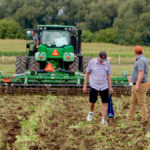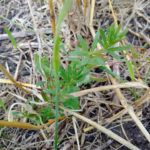
Tag Archives Weed control

The learning curve of cover crops
Cover crops may have an almost endless number of combinations, but end goals, planting windows and seed costs may help narrow down species selection

Is the weed seed ‘destructor’ ready for prime time in Canada?
Aussie invention is much cheaper, easier to use, but is still in the ‘promising, not proven’ category

To till or not to till
Demo highlights differences between tillage and no-till cover crop practices

Fall management key to weed resistance
It’s in the fall you see what worked and what you can change up for next year

New cases of Tall waterhemp found in Manitoba
This is a Tier 1 noxious weed that Manitoba Agriculture wants to prevent from spreading

A messy year for weeds
Farmers didn’t see many weeds early this year, but agronomists warned that the flush was coming

Dry year adds to spray considerations
Manitoba’s weather lately means weeds have toughened up and herbicides may have an uphill battle if weeds aren’t growing vigorously

In Your Co-operator this week: June 20

Cool weather casts questions on weed burn off
Weeds haven’t exactly flourished in the cold this spring, but the province warns that they are germinating, and the cold itself lends challenges to spraying them out


